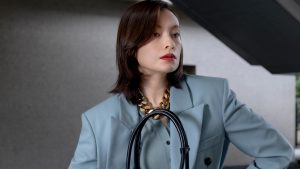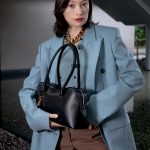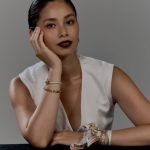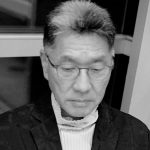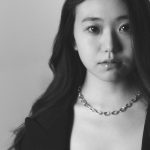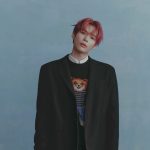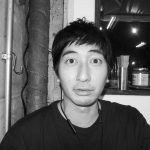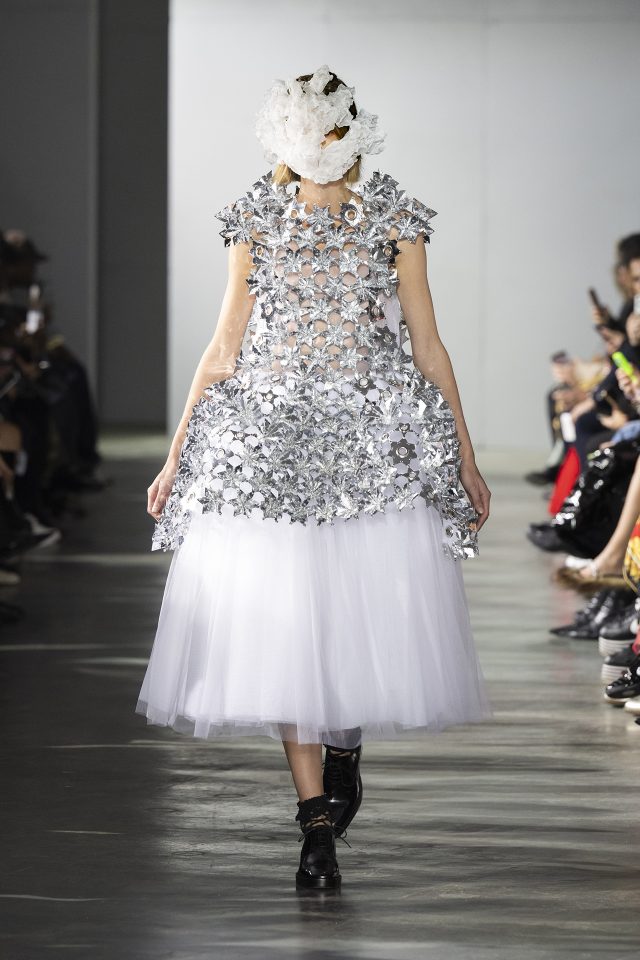VISIONAIRE (ヴィジョネア) の創立者、Cecilia Dean (セシリア・ディーン) インタビュー
Cecilia Dean
ニューヨークを代表するビジュアル・マガジンのひとつ、『VISIONAIRE (ヴィジョネア)』。Stephen Gan (スティーブン・ガン) とCecilia Dean (セシリア・ディーン)、James Kaliardos (ジェームズ・カリアドス) らが1991年に立ちあげた同誌は、ファッションとアートの融合という当時はまだめずらしかったアイデアと、他の追随を許さないオリジナリティで、またたく間に世界のファッション業界のみならず、クリエイティブ業界全体から注目を集める存在になった。コレクターズ・マガジンとしても知られ、バックナンバーは高値で売買されている。
VISIONAIRE (ヴィジョネア) の創立者、Cecilia Dean (セシリア・ディーン) インタビュー
Magazine
*You’ll find the English text after the Japanese.

Photo by Takashi Osato at Angle Management
ニューヨークを代表するビジュアル・マガジンのひとつ、『VISIONAIRE (ヴィジョネア)』。Stephen Gan (スティーブン・ガン) と Cecilia Dean (セシリア・ディーン)、James Kaliardos (ジェームズ・カリアドス) らが1991年に立ちあげた同誌は、ファッションとアートの融合という当時はまだめずらしかったアイデアと、他の追随を許さないオリジナリティで、またたく間に世界のファッション業界のみならず、クリエイティブ業界全体から注目を集める存在になった。コレクターズ・マガジンとしても知られ、バックナンバーは高値で売買されている。63号目となる最新号のテーマは“Forever (永遠)”。号によってはスポンサーによって発行される同誌だが、今回のスポンサーは今年で設立30周年をむかえるG-SHOCK (ジーショック) だ。世界でも希有なメタルをキャンバスに見立て、Mario TestinoやRichard Avedon、Karl Lagerfeld、Inez Van Lamsweerde and Vinoodh Matadin、そしてオノ・ヨーコなどといった10組みの豪華アーティストたちとのコラボレーションが繰り広げられている。
今回のローンチのために来日した共同創立者の Cecilia Deanに、彼女のキャリアの軌跡から『VISIONAIRE』の最新号、今後の予定についてまで話を聞いた。
※シルバー (ステンレス製) の通常版は世界限定1500部発行で、価格は34,650円。Dover Street Market Ginza (ドーバー ストリート マーケット ギンザ) でのみ限定販売されるゴールド版 (5部限定、全世界で150部限定発行) は150,150円で受注販売されている。
—まず、ファッション業界で働きはじめた経緯を教えてください。以前はモデルをしていましたよね?
1980年代中盤から終わりのころまでモデルをしていました。キャリアをスタートさせたのはニューヨークで、あるフォトグラファーに道でスカウトされて、モデル事務所に紹介してもらったんです。そしてその事務所のマネージャーが、Stephen GanとJames Kaliardosを紹介してくれたんです。すぐに友だちになりました。当時、私はまだ高校生で、彼らはパーソンズ美術大学の生徒でした。
モデルをしていた時期は、パリやミラン、ロンドンで仕事をしていて、東京にも3カ月間だけ仕事で滞在したことがあります。そのころがちょうど、外国人モデルが東京に来はじめたころで、本当にたくさんの仕事がありました。契約をしていたモデル事務所はImage (イマージュ) で、すばらしいエージェントでした。
毎日仕事をして、1日に2件仕事が入っていたときもありましたね。クレイジーな生活を過ごしていて、仕事の後は夜遊びに出かけて毎晩パーティ三昧でした。住んでいたアパートが六本木にあったので、六本木でよく遊んでいましたね。東京での日々がすごくたのしかったのを覚えています。
—東京にはどのような印象を持っていますか?
東京にはあまり頻繁に来ないのですが、来るたびに感覚過多になってしまいます。とてもミニマリストなすばらしいレストランがありますよね。昨日は銀座の久兵衛でご飯を食べました。すごくキレイな場所で、とても静かでした。寿司職人がお寿司を一貫ずつ渡してくれるんです。とてもすばらしい体験です。でも、東京にはロボットレストランのようなところもあったりするので、おもしろいですよね。
東京には2面性があるとおもうんです。本当にうつくしく、洗練されていて、静かな部分もあれば、クレイジーな色やライトがきらめく世界もある。2つの相反する世界が同時に存在する。これが私が持っている東京の印象です。
あと、東京には世界トップクラスの本屋もあります。あそこまでうつくしい本屋はニューヨークにはありません。日本の出版物に対するリスペクトは、アメリカのそれとは比になりません。
—StephenとJamesに学生時代に出会っているということですが、『VISIONAIRE』の構想はどのようにしてはじまったんですか?
あのころ、Stephenはファッションフォトグラファーで、Jamesはヘアメイクをやっていたんです。私は高校を卒業するところでした。みんな同時期にパリに移住することになって、すごく仲よくなったんです。Stephenが『Details (ディテールズ)』誌で働きはじめたころは、Jamesはまだ学生でした。私がパリに戻ったのは大学の最終学期のときです。コロンビア大学で英文学とフランス文学を勉強していました。
私たちはみんな、仕事がなかったので、見つける必要がありました。家が特にお金持ちというわけではないので。Jamesはヘアメイクに飽きてきていて、StephenはCondé Nast (コンデナスト) が『Details』誌を買収したのが原因で、同誌を離れないといけない状況でした。
お互いファッション業界の知り合いはかなりいました。モデル時代、初期のころから私はMario Testino (マリオ・テスティーノ) といつも撮影をしていましたし、Peter Lindbergh (ピーター・リンドバーグ) やEllen von Unwerth (エレーン・ヴォン・アンワース)、Juergen Teller (ユルゲン・テラー)とも仕事をしていました。Stephenも『Details』を通してたくさんの人を知っていました。イザベルとルーベン・トレド夫妻などといった、すばらしいイラストレーターやファッションデザイナーたちと知り合いでした。Jamesも仕事柄、本当にたくさんのモデルを知っていました。
彼らの多くはパーソナル・ワークを大切にしているんです。Mario Testinoと広告の仕事をしていたときは、撮影後に現場に残ってパーソナルなテストシュートをよくしていたのを覚えています。ヌードになったりもしましたし、アーティスティックな撮影もしました。あと、スタジオやライティングなどを新たに手配する必要がないことを利用して、撮影費用を捻出できない若手デザイナーのために撮影をしたりもしていました。
当時のフォトグラファーはみんなそういうことをいつもしていましたね。でもその作品を発表する場がなかった。雑誌媒体も求めていませんでしたし、もちろんインターネットもありませんでした。フォトグラファーがアートギャラリーで個展を開くという時代でもありませんでした。だから「私たちで出版しよう!」ってことになったんです。これがすべてのはじまりです。

Photo by Takashi Osato at Angle Management
—『VISIONAIRE』の名前の由来はなんですか?
友人のひとりが考えたんです。『VISIONAIRE』という言葉自体、スペルが間違っていますし、特に意味はありません。でもなぜか良いなとおもったんです。他の案も特に出ませんでしたし。
—『VISIONAIRE』の編集作業に関してですが、どのようにテーマやコンテンツを決めているんですか?
やはりブレインストーミングからです。挑戦してみたいテーマやテクノロジー、フォーマットはいつもたくさんありますし、仕事をしたいアーティストたちもたくさんいます。いろいろとオフィスでチームメンバーと話をするんです。アーティストたちと会話をしたり、ギャラリーや映画の試写会に行ったり、新しい人たちに会ったり、新しいテクノロジーの展覧会に行ったりもします。すごく疲れます。スポンジのように柔軟に吸収することが求められますし。
デザインを指揮しているGreg Foley (グレッグ・フォーリー) は本当にタイプフェイスやデザインに傾倒しているので、打ち合わせに来てはいろいろと本などを見せてくれます。彼はデザインの批評ができるんです。アートディレクターのSean Brown (ショーン・ブラウン) も本当にアートの世界に精通していて、すばらしいアーティストたちや彼らの作品を教えてくれるんです。編集作業はオーガニックに進んでいきます。
—ファッションとアートを結びつける考えはいまでは結構当たり前ですが、1991年に『VISIONAIRE』を立ち上げたときはあまりそういうことはなかったのでしょうか?
1990年代、ファッションとアートは全く交わったりしていなかったですね。この2つの分野を融合させようと具体的に言うことはありませんでした。私たちはただ、うつくしいイメージを出版しようと決めただけです。ファッションの分野だったり、アートの分野のイメージだったりしました。ドキュメンタリーのときもあれば、フォトジャーナリズムのときも。ファッションとアートはお互いかけ離れた存在とおもう人もいますが、私たちにとって大切だったのはおもしろいイメージかどうか。カテゴリーはあまり重要ではありませんでした。
ファッションとアートの関係は、いまはもう昔とは違うでしょうね。ファッション系のクリエーターやファッションフォトグラファーの多くが展覧会をしたり、アートギャラリーを運営したりしています。1990年代ではありえないことです。フォトグラファーで映画監督のCindy Sherman (シンディ・シャーマン) がComme des Garçons (コム デ ギャルソン) を撮影したときに話題になりましたよね。もともとComme des Garçonsはどちらかというとアート寄りでしたけど。
—『VISIONAIRE』ではNan Goldin (ナン・ゴールディン) とHelmut Lang (ヘルムート・ラング) がコラボレーションをしたこともありましたよね。
Nanが本当にファッションに興味を持っていたんです。彼女がファッションの華やかでうつくしい部分が大好きにも関わらず、その世界には属していないと感じているという印象をいつも受けていたんです。彼女はHelmut Langの大ファンで、私たちは彼を知っていましたし、彼もNan Goldinの大ファンでした。だからみんな一緒に撮影をしようと提案したんです。すばらしい撮影でした。『VISIONAIRE』の18号に掲載しています。
—1990年代初期のころのファッションメディアはどのような感じだったのでしょうか?インディペンデントの雑誌はあまりありませんでしたよね?
当時のそういう雑誌は一切おもいだせません。ただ、正直に言うと、もともと雑誌はあまり読まないんです。『The Face (ザ・フェイス)』や『i-D』は当時みんな読んでいました。ロンドンから来る情報はすべて新しくておもしろかったですね。『The Manipulator (ザ・マニピュレーター)』『EGOÏSTE (エゴイスト)』『Comme des Garçons Six (コム デ ギャルソン・シックス)』などはチェックしていました。
—最新号の“Forever”ですが、金属のプレートを用いるというアイデアは、どのようにしておもいついたのですか?
実はG-SHOCKからなんです。G-SHOCKの時計は世界で最も頑丈な時計と言われていますよね。インデストラクティブル (破壊できないほど強固) だと。だから『VISIONAIRE』の“インデストラクティブル”号を制作しようという話になりました。そこから金属を用いるというアイデアに至ったのです。
以前、Riccardo Tisci (リカルド・ティッシ) と“レリジョン (宗教)”号に取り組んだときに、宗教の図像学についていろいろとリサーチをしたことがあります。カトリックの教会でよく見るたたき込まれた金属について勉強しました。ですので、“金属”を使うというアイデア自体は前々からあったのです。ただ、どういう形で実現させるかがわからなかっただけです。
こういう風にさまざまなアイデアが重なり合って、『VISIONAIRE』はパズルのようにできあがっていくのです。パズルのようです。“金属”のパズルをどう完成させようかと考えているときに、“G-SHOCK”という別のパズルを手に入れて、組み合わせていく。
今回の号のプロダクションは本当に大変でした。アーティストたちに参加して欲しかったのですが、「“インデストラクティブル”号向けにどういう作品をつくってくれますか?」と聞くのは少し変だったというか、あまりポエティックではないですよね。だから発想を少し変えて、「“インデストラクティブル”= 永遠に残るモノ=フォーエバー」という風に考えたんです。“Forever”というタイトルはすごく良いですし、アーティストたちにとってもインスピレーションになります。
アイコンとなるイメージが欲しかったので、Kate Moss (ケイト・モス) の顔写真をMario Testinoに用意してもらいました。彼女は現代のアイコンで、彼女の顔は世界で最も有名だと言えるでしょう。
Richard Avedon (リチャード・アヴェドン) の作品についてですが、これは、彼が1960年代を代表するモデルのPenelope Tree (ペネロープ・トゥリー) にメタルマスクを着させて撮った有名なポートレートです。彼の財団は、これまで彼の写真作品を別の媒体に再プリントさせることを許可してこなかったのですが、今回、めずらしく許可をくれたので、金属に彼の写真をエッチングしました。すばらしい出来栄えだとおもいます。プリントをせずに、点を打ち込んで化学薬品で仕上げた作品になりました。
ヌード作品も絶対に入れたいとおもっていたところ、Karl Lagerfeld (カール・ラガーフェルド) がヌード作品を提供してくれたんです。彼が夢中になっているBaptiste Giabiconi (バティスト ・ジャビコーニ) のうつくしい白黒写真です。とてもクラシックなイメージだったのですが、金属に打ち込んでみると「ターミネーター」のようになりました (笑) とてもサイファイです。提供してもらったアート作品がどのような形に生まれ変わるのかが事前にわからないというもおもしろいです。Karlの作品は、エイリアンのようでもあり、とても未来的な作品になりました。
Inez Van Lamsweerde and Vinoodh Matadin (イネス・ヴァン・ラムスウィールド & ヴィノード・ マタディン) にも依頼したところ、彼らが大好きなLady Gaga (レディー・ガガ) の写真を送ってくれました。彼らにとって、Gagaは永遠に残る存在で、現代のアイコンでもあります。音楽に関連した作品を含めることは理にかなっています。G-SHOCKは、アートよりも音楽とのつながりの方が強いので。
オノ・ヨーコとの作品は、鏡のような作品に仕上がりました。自分自身を見て、プレートに書かれている言葉を自分に向かって読んで初めて、作品が完成するという、とても彼女らしい作品です。いろいろと感じとってください。
Steven Klein (スティーブン・クライン) は“タフ”の要素を考えてくれました。今回参加しれくれたアーティストたちとは、不滅性やタフネスについて話し込みましたし、彼らもG-SHOCKがスポンサーだと知っていました。Stevenはタフでセクシーな作品をつくりたかったようです。
ロンドンで活躍するアーティストのGilbert & George (ギルバート & ジョージ) との作品は、硬貨にある女王の写真を模した作品になりました。この写真をCGIアーティストのところに持っていって、それから金属に落とし込みました。
Craig McDean (クレイグ・マクディーン) との作品は、つる草が巻かれたスカルの作品です。先祖から助言をもらう特別な儀式がテーマです。彼は“Forever”について考えているとき、スピリチュアルなレベルで考えていたようですね。とてもシンプルなコンセプトでも、みなそれぞれ全く異なる解釈をするのでおもしろいです。
あと、私はDover Street Market (ドーバーストリートマーケット) が大好きなので、ここで新しい号をローンチできてうれしいです。
—Cecilia さんにとって、なにか永遠に残って欲しいモノはありますか?
全くありません。
—1980年代後半からファッション業界で働かれていますが、物事は良い方向に進んでいるとおもいますか?
出版に関して言えば、コミュニケーションをする機会はそこら中にあふれているとおもいます。良いことか悪いことかわかりませんが、なにか言いたいことがあったら、だれでも大勢の人に向けて言うことができる。インターネットのおかげでビジネスはより民主的になって良いことだとおもいます。特に、大都市に住んでいない人たちにとっては、情報を集めるために重要です。旅行ができたら良いのですが、せずともたくさんの情報に接することができますよね。もはや当たり前ですが、物事のあり方を変えてしまうほどです。
—ニューヨークについてお聞きします。アートギャラリーがたくさんあるとおもいますが、定期的にチェックしているところはありますか?
たくさんありすぎて全部を見ることはむずかしいですね。もちろん、有名どころがなにを展示しているかチェックするのは当たり前ですが、新しいギャラリーが次々とアッパー・イースト・サイドに移っている気がします。収集家兼ギャラリストのAdam Lindemann (アダム・リンデマン) の新ギャラリー「Venus Over Manhattan (ヴィーナス・オーバー・マンハッタン)」や、Marian Goodman (マリアン・グッドマン) の「Marian Goodman Gallery」はすごく良いです。Marianは重鎮です。「Half Gallery (ハーフ・ギャラリー)」や「Haunch of Venison (ホーンチ・オブ・ヴェニソン)」もアッパー・イースト・サイドにあります。
このエリアは新しいギャラリー・エリアになるんだとおもいます。昔からお金がある地区です。対照的に、いまギャラリーがたくさんあるウエスト・チェルシーは倉庫街で、昔はだれも行きませんでした。ギャラリーがアッパー・イースト・サイドに移りはじめているのは興味深いことです。私たちはあまりそのエリアには行かないのですが、これからは行かないといけなくなりますね。
—今後の予定を教えてください。
数年前に「MoMA’s PS1」で「Move!」という展覧会をキューレートしたのですが、それを今年の3月にブラジルに持っていったんです。10万人が見に来てくれました。東京でもこの企画をやりたいです。東京にピッタリだとおもうんです。いまスポンサーを探しています。
あと、Tシャツもつくりたいですね。『VISIONAIRE』は高価で、予約で売り切れてしまうことも多いので、見つけること自体、容易ではありません。Tシャツの方が簡単に入手できますし、かっこ良いモノをつくれるとおもうんです。Karl LagerfeldやNick Knight (ニック・ナイト)、Thomas Demand (トーマス・デマンド)、David Byrne (デヴィッド・バーン)、Inez Van Lamsweerde and Vinoodh Matadin、Thomas Ruff (トーマス・ルフ)、Peter Lindberghなどといった豪華アーティストたちと以前、Lacoste (ラコステ) のポロシャツをつくったこともあります。“ウエアラブル (着用可能)”なアートです。
そういうTシャツをまたつくれたら良いですね。『Facebook』には若いフォロワーがたくさんいますが、彼らには『VISIONAIRE』は高すぎるし、見つけるのも大変です。Tシャツだったら購入のハードルも低いですし、大金を使わずに『VISIONAIRE』ファミリーの一員になれます。
<プロフィール>
Cecilia Dean (セシリア・ディーン)
1991年に Stephen Ganと James Kaliardos とともに『VISIONAIRE』を創刊。ファッションとアートを融合させる試みのパイオニア的存在で、ニューヨークを代表するカルチャーアイコン。同誌の創刊前はニューヨークのコロンビア大学にて英文学とフランス文学を学んでいた。1980年代はモデルとしても活躍し、Richard Avedon や Mario Testino、Steven Meisel などと仕事をしていた。現在、Parsons School of Design (パーソンズ美術大学) のコミュニケーションデザイン学部の客員教授も務めている。
HP: http://www.visionaireworld.com
“VISIONAIRE” is a leading multi-formatted fashion and art magazine based in New York. Launched in 1991, this unique publication is the brainchild of Stephen Gan, Cecilia Dean and James Kaliardos. Through the idea of fusing fashion with art on an extremely creative level (a pioneering concept back then), it quickly gained international acclaim in the creative industry as well as in fashion. It is also renowned for being one of the most sought-after magazines collected by admirers all over the world.
The theme of the 63rd issue is “Forever”. This time, VISIONAIRE has teamed up with G-SHOCK, which is celebrating its 30th anniversary this year. The latest issue has an extraordinary format which is entirely metal-based. Furthermore, it has a list of 10 exceptional and internationally recognized contributors. These include Mario Testino, Richard Avedon, Karl Lagerfeld, Inez Van Lamsweerde and Vinoodh Matadin, and Yoko Ono. We managed to meet up with Cecilia Dean and interview her about the new issue and her creative path.
—Please tell us about how you started out in fashion. You used to model before?
I modeled in the mid to late 80s. It all started in New York. A photographer saw me on the street and introduced me to an agency. My agent then introduced me to Stephen and James. We all became friends. At the time, I was at high school and they were at Parsons.
During my time modeling, I was in Paris, Milan, and London. I also spent three months in Tokyo. It was the beginning of models coming to Tokyo and it was really a lot of work. You were on contracts. I was with Image and they were really great.
I would work every day, sometimes on two jobs. It was crazy. Then we’d go out and party all night. We were in Roppongi a lot. That’s where my apartment was. Tokyo was incredible.
—What do you think of when you think of Tokyo?
I don’t come here so often, but whenever I do, it’s like a sensory overload. There are these incredible restaurants which are quite minimal. We ate at Kyubey yesterday. It was so beautiful and calm. The chefs there hand you sushi one piece at a time. It’s a really beautiful experience, but then, Tokyo also has robot restaurants.
To me, it’s the two sides of Tokyo. There’s this really beautiful, sophisticated and calm part of Tokyo. Then there are these crazy colors, metals, flashing lights and girls in bikinis. For me, that is Tokyo – these two things that happen simultaneously.
There are also the most beautiful bookstores here. We have no nice bookstores in New York. Japan really respects and honors publishing in a way that’s very different from the US.
—You met Stephen and James when you were a student. How did you guys develop the idea of starting VISIONAIRE?
Stephen was a fashion photographer and James was doing hair and makeup. I was just finishing high school. We all ended up moving to Paris at the same time and we became very good friends. Stephen started working for Details magazine and James was still in school. I came back to Paris in my last semester of university. I went to Columbia University to do English and French literature.
Basically, none of us had a job and I needed to get one. I’m not a rich person. James wasn’t finding hair and makeup that interesting and Stephen had to leave Details after Condé Nast took it over.
We knew so many people in fashion. When I was modeling, I modeled for Mario Testino all the time. He was one of my first jobs. I worked with Peter Lindbergh, Ellen von Unwerth and Juergen Teller. Stephen also knew a lot of people through Details, like Isabel and Ruben Toledo. All these great illustrators and fashion designers. James knew so many models because he was doing hair and makeup.
A lot of these people would do personal work. I remember when Mario Testino and I would do an advertising campaign. After we’d done all the photos we being paid to do, we’d do some more fun and personal stuff. Sometimes it would be a nude or it would be a blurry and artistic shot. Or sometimes, it would be for a really young designer who couldn’t afford to produce a shoot, so we’d do photos for that because we’d have the whole studio and lights set up anyway.
All the photographers did that all the time, but there was no place to publish this work. The magazines didn’t want it and there was no internet. The photographers didn’t show in art galleries. So we said, “Okay, we’ll publish it.” That was the beginning.
—What’s the story behind the name VISIONAIRE?
A friend of ours came up with it. VISIONAIRE is misspelled in both languages and doesn’t really mean anything. It just stuck. We couldn’t come up with anything else.
—Regarding editing processes, how do you put the magazine together and choose your content and themes?
We brainstorm. We always have a lot of themes, technology, formats and artists that we want to work with. We talk in the office and with the team. It’s also a lot about talking with other artists; going to galleries and film screenings; meeting new people; going to conventions with new technology. It’s exhausting. You just have to be like a sponge.
Greg Foley, Our Creative Director, is so into type and design, so he’ll come to a meeting and show us books and type treatments. He’s able to critique that. Our art director, Sean Brown, is really involved in the art world, so he directs us to really great artists and what they’re working on. It’s an organic process.
—The idea of connecting fashion with art seems quite common now, but was it unusual when you launched VISIONAIRE in 1991?
Back in the 90s, fashion and art were completely separate. We didn’t specifically say we were going to mix the two. We’d just see beautiful images and decide to publish them. Some happened to be fashion and some happened to be art. Sometimes it was documentaries, sometimes a photojournalist. For some people, fashion and art are in very separate categories, but for us, it was about interesting images. It didn’t really matter what category they came from.
I think it’s probably a little bit different now. A lot of fashion creators and fashion photographers have shows and art galleries, but that was unheard of in the 90s. That would never ever have happened back then. It was quite a big deal when Cindy Sherman did the Comme des Ga>çonsstuff, but of course, Comme des Garçons is already a little artsy.
—I remember you brought Nan Goldin and Helmut Lang together.
Nan was really enthralled by fashion. I always got the feeling that she loved the glamour and beauty of fashion, but she didn’t feel she was part of that world. She’d always admired Helmut Lang. We also knew Helmut and he really loved Nan Goldin, so we suggested that they do a shoot together. It was fantastic. We did it for our 18th issue.
—What was the fashion media landscape like during the early 90s? There weren’t so many independent publications then, right?
I can’t recall any independent publications, though to be honest, I very rarely look at magazines. We all looked at The Face and i-D. Everything coming out of London was new and exciting for us. We also looked at The Manipulator, EGOÏSTE, and Commes de Garcons Six.
—Regarding the new issue “Forever”, how did you come up with the idea of printing the magazine in metal?
We actually got the idea from G-SHOCK. They described a G-Shock watch as the toughest watch in the world. They said it was indestructible, so we decided to do an indestructible issue of VISIONAIRE. We then came up with this idea of doing it in all metal.
We’d done a lot of research when we were working on the religion issue with Riccardo Tisci. It’s all religious iconography. We were studying case options and a lot of it is the pounded metal that you’d see in Catholic churches. We had this idea of metal in our heads already, but we didn’t have a specific place for it.
This is how issues of VISIONAIRE happen. You’ve got these puzzle pieces, like metal. G-Shock comes along as another puzzle piece and then you start putting them all together.
The production was so difficult. We wanted to ask artists to contribute, but it was a little bit weird to ask an artist, “What would you contribute to an indestructible issue?” It’s not so poetic. So when we were thinking about “indestructible”, we thought that something indestructible is something that lasts forever. “Forever” is a great title and it’s good inspiration for an artist.
We wanted to make sure that we had an iconic face, so Mario Testino did Kate Moss. She’s our contemporary icon and I think she has the most famous face in the world.
Richard Avedon did a very famous photo where Pelenope Tree is wearing a metal mask. The estate historically does not allow photos to be reprinted in a different medium, so it was quite unusual for them to allow us to etch the image onto stainless steel. I think it looks incredible. There’s no printing. It’s just the size of the dot and it’s burnt with chemicals.
We really wanted to have a nude in the issue and we got an image from Karl Lagerfeld. It’s a beautiful black and white of Baptiste Giabiconi, his favorite model. It’s very classical looking, but then you pound it into metal and it transforms into the Terminator. It becomes very sci-fi. It’s interesting because you don’t really know what’s going to happen to the artwork. You just have to do it and see what happens. This piece became very alien and futuristic.
We also asked Inez Van Lamsweerde and Vinoodh Matadin. They love Lady Gaga. They think she’ll last forever and that she’s the modern day icon. It made sense to have a music representation. I feel like G-Shock is really associated with music and less so with art. It was good to have something which touched on this element.
With Yoko Ono, we did the piece as a mirror. You’re supposed to look at yourself and read it.
Steven Klein was thinking tough. With all the artists, we talked about indestructibility and toughness. They all knew G-Shock was sponsoring the issue. He wanted something tough and sexy.
The London-based artists Gilbert & George had a photo of the queen from a coin. I took this photo to a CGI artist and then we made it back into metal.
Craig McDean did a skull wrapped in vines. It’s a special ritual to get advice from your dead ancestors. When Craig was thinking about “forever”, he was thinking about it on a more spiritual level. It’s interesting because you can take a very simple concept and each person will produce a different interpretation.
I love Dover Street Market, so I’m very happy that we can launch our new issue here.
—Is there anything that you wish could last forever?
No, nothing.
—You have been working in the fashion industry since the late 1980s. In your opinion, have things changed for the better?
In publishing, there are now so many opportunities for people to communicate. For better or for worse, if anyone has anything to say, they can say it to a lot of people instantaneously. The internet made business more democratic and I think that’s a really good thing. It’s important for people who don’t live in big cities that they have access to all this information. It’s better if you can travel, but if you can’t, you can get a huge amount of information anyway. That’s a game changer.
—There seem to be so many art galleries in New York. Are there any specific ones that you regularly check out?
There are so many, it’s hard to look all of them up. Obviously, you want to know what’s happening in all the big ones, but there’s a lot of new galleries that feel like they’re moving to the Upper East Side. Venus Over Manhattan is fantastic. It’s the new Adam Lindemann gallery. The Marian Goodman Gallery is also amazing. Marian has been around forever. Half Gallery and Haunch of Venison are also on the Upper East Side.
I think the Upper East Side is going to be the new gallery area. It’s old establishment with money, whereas West Chelsea was warehouses. It’s interesting that the galleries are moving there. None of us would ever have gone to the Upper East Side, but now we have to.
—What are your future plans?
A couple of years ago, I curated an exhibition, “Move!”, for MoMA’s PS1. I took it to Brazil in March and we had 100,000 visitors. I think it would be so much fun to bring it to Tokyo. I’m currently looking for a sponsor. “Move!” would perfect for Tokyo. People would freak out.
We also want to do T-shirts. VISIONAIRE is expensive and it’s hard to find, but T-shirts are easier and they’re still great. I’ve worked with really serious artists doing polo shirts, like Karl Lagerfeld, Nick Knight, Thomas Demand, David Byrne, Inez & Vinoodh, Thomas Ruff, and Peter Lindbergh. It’s wearable art.
It would be fun to do something like that because we have all these young followers on Facebook. They can’t afford or find VISIONAIRE, so we could make T-shirts. Then they could be part of the VISIONAIRE family without spending so much money.
<Profile>
A longtime central figure in New York¹s cultural landscape, Cecilia Dean helped pioneer the cross-pollination of fashion and art by co-founding Visionaire. This collectible multi-format limited-edition publication was started with partners Stephen Gan and James Kaliardos in 1991, during Dean’s final semester at Barnard College, Columbia University in NYC where she earned a BA in English and French literature. Today, Dean continues to oversee Visionaire while also serving as a visiting professor in the Communication Design department at Parsons School of Design. In 2010 Dean co-curated an immersive participatory art and fashion exhibition called MOVE! at The Museum of Modern Art’s PS1 in NYC. Dean co-curated the Brazilian version for SESC in Sao Paulo in 2013. MOVE!’s next iteration is Miami. Dean has lectured and participated in panels in NYC, Sao Paulo, Moscow, and Seoul. Most recently, she gave the keynote speech for the 2012 graduating class at Parsons School of Fashion. A former model photographed by the likes of Richard Avedon, Mario Testino, Steven Meisel, among others and long admired for her sense of style, Dean has been cited on numerous international best-dressed lists.
